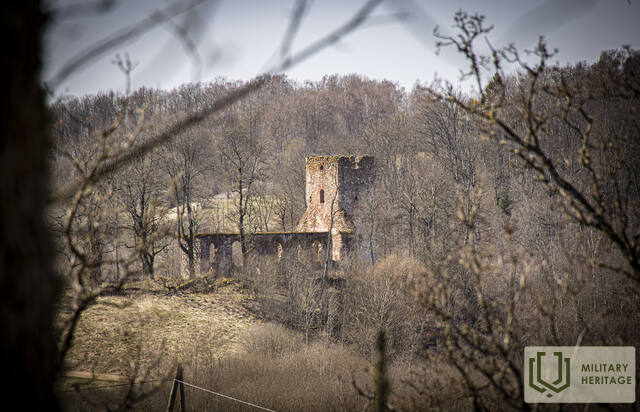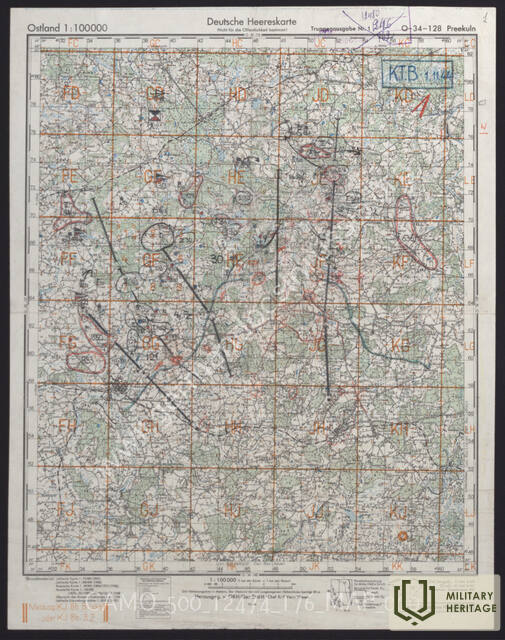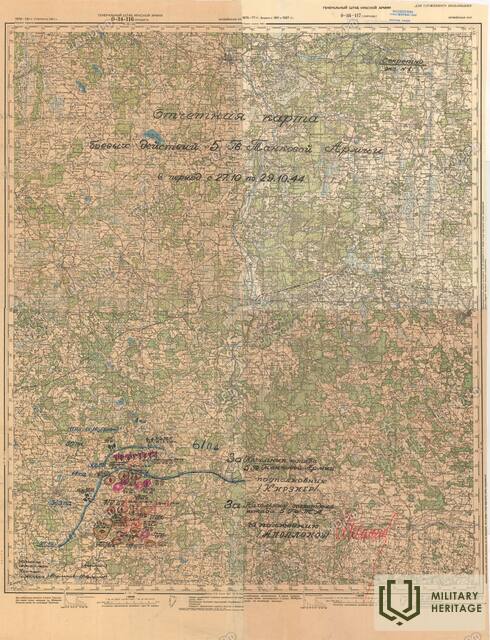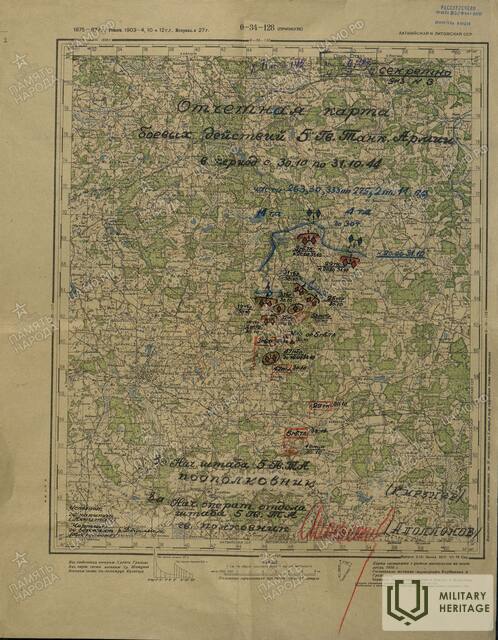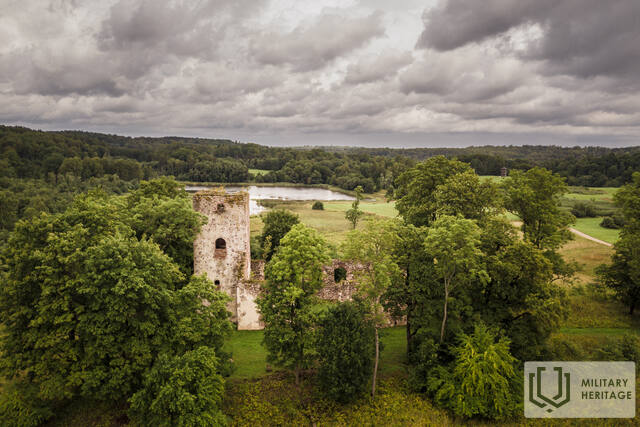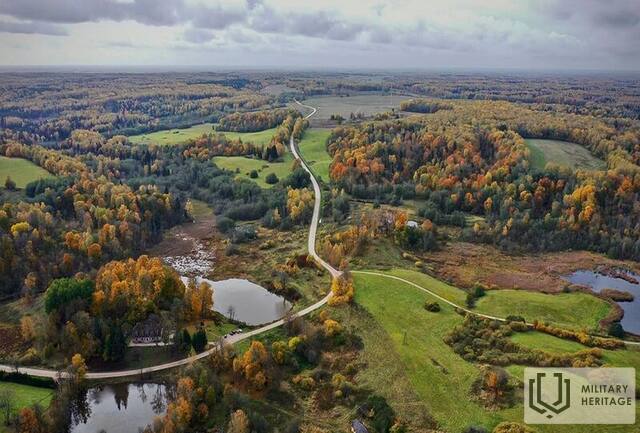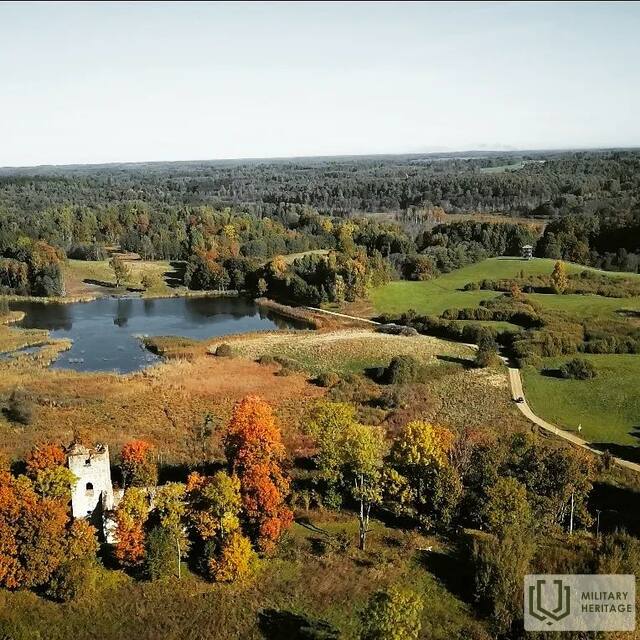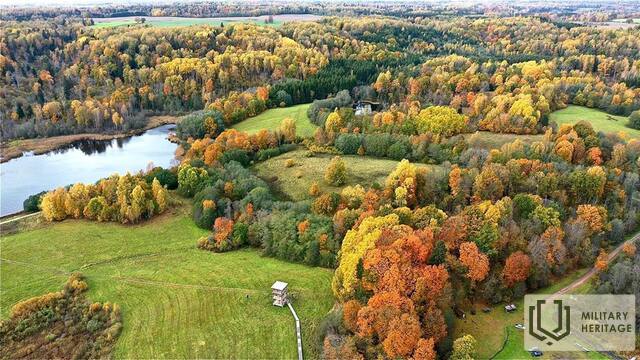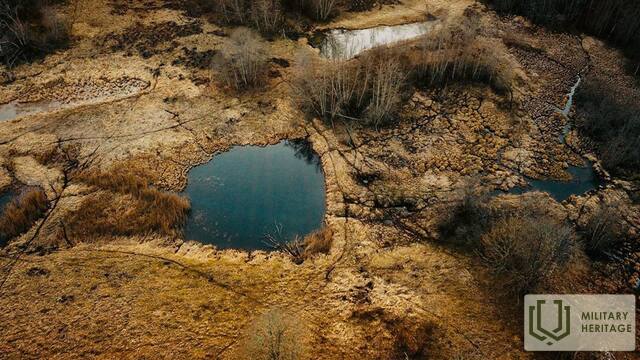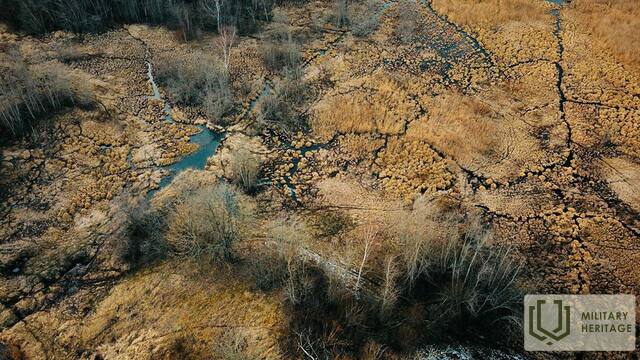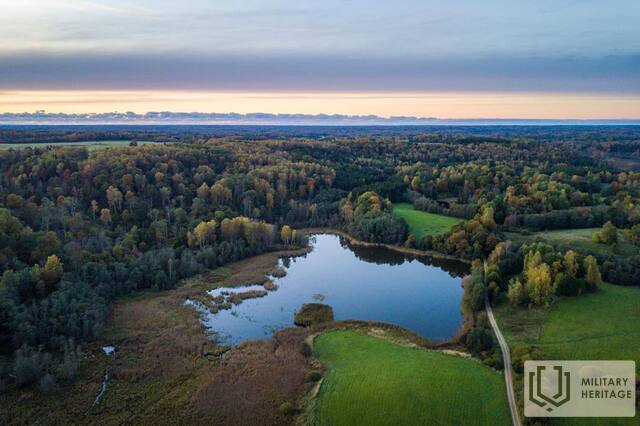World War II battle sites near Embute hillfort and church
Battle site

Educational programs
Expedition in the ancient valley of Embūte
the opportunity to get to know the ancient cultural history of Embūte. Visiting Embūtes TIC expositions, Knights' Hill, Indus and Arias Oak, Church Ruins, Curonian Sword, Lookout Tower, Yoda Dam, Indus and Arya Sculptures, Yoda's Footstone, Pilskalns Spring, Curonian Mounds in a guided expedition.
"In the footsteps of Yoda." – 3.5 km long circular trail.
"In the footsteps of Indul and Arija" - a 5 km long circular trail.
Related timeline
Related stories
Embute Church walls - witnesses of World War II
The Embute Church is one of the most vivid witnesses of the Second World War in Kurzeme. Traces of artillery and other shells can still be seen on the church walls and bell tower. The German army used the church (like many others in Kurzeme and elsewhere) for impregnable defensive purposes. As a result, the church was destroyed and has not been rebuilt since the Soviet




